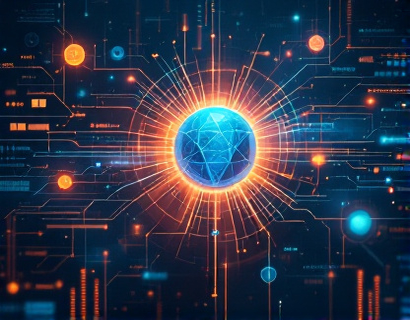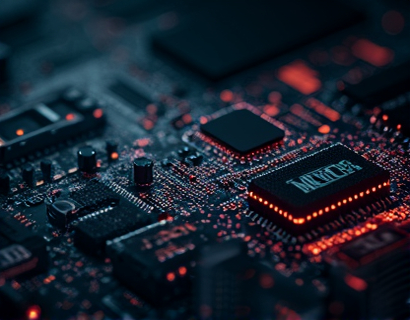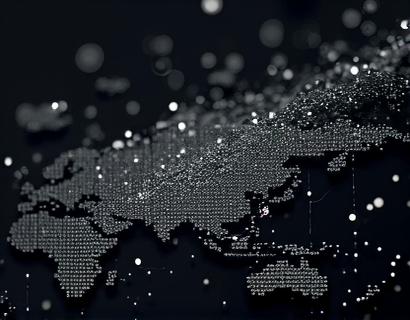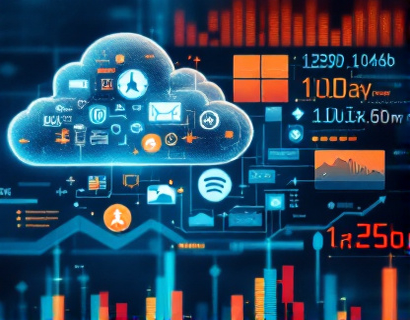Decentralized Productivity Revolution: Leveraging AI and Crypto for Next-Gen App Ecosystems
The digital landscape is undergoing a profound transformation, driven by the convergence of artificial intelligence (AI) and cryptocurrency. This synergy is giving birth to a new era of decentralized app ecosystems, promising to revolutionize productivity and user experience. The integration of these technologies is not just an incremental advancement but a fundamental shift in how we interact with digital tools and services. This article delves into the transformative impact of this merger, exploring how it streamlines tasks, enhances efficiency, and paves the way for a more decentralized and user-centric digital future.
The traditional centralized model of app development and distribution has several inherent limitations. Centralized systems rely on a single entity to manage and control the application's infrastructure, data, and updates. This centralization can lead to bottlenecks, single points of failure, and limited user control over personal data. Moreover, the centralized approach often results in higher costs and slower innovation cycles, as changes require approval and implementation through a rigid hierarchy.
Enter the decentralized paradigm, where the power is distributed across a network of nodes, eliminating the need for a central authority. Blockchain technology, the backbone of cryptocurrencies, provides a secure and transparent way to manage decentralized systems. In this context, decentralized apps (dApps) emerge as the next generation of digital applications, offering enhanced security, transparency, and user autonomy.
AI, on the other hand, brings intelligent automation and advanced data analysis to the table. When combined with blockchain, AI can process and analyze data in a decentralized manner, ensuring that insights and decisions are made without relying on a central server. This combination not only boosts efficiency but also ensures that user data remains private and secure, as it is stored and processed across the network rather than in a single location.
Enhanced Security and Privacy
One of the most significant advantages of decentralized app ecosystems is the enhanced security and privacy they offer. In a decentralized system, data is not stored in a central database, making it much harder for hackers to target and exploit. Each node in the network holds a copy of the data, and any changes require consensus from the majority of nodes, significantly reducing the risk of data breaches.
Cryptography plays a crucial role in securing transactions and communications within these ecosystems. Blockchain's cryptographic algorithms ensure that data is tamper-proof and that all transactions are verifiable and immutable. This level of security is particularly important for applications dealing with sensitive information, such as financial transactions, health records, and personal identification data.
Privacy is another critical aspect. Decentralized apps can utilize zero-knowledge proofs and other privacy-preserving techniques to allow users to prove the validity of information without revealing the actual data. This ensures that users maintain control over their personal information, choosing what to share and with whom, without compromising their privacy.
Improved Efficiency and Scalability
The decentralized nature of these app ecosystems also leads to improved efficiency and scalability. Traditional centralized systems often struggle with scalability, as adding more users or data requires upgrading central servers, which can be costly and time-consuming. In contrast, decentralized systems can scale horizontally by adding more nodes to the network, distributing the load and maintaining performance even as the user base grows.
AI enhances this efficiency by automating routine tasks and optimizing resource allocation. Machine learning algorithms can analyze network activity and predict potential bottlenecks, dynamically adjusting the distribution of tasks to ensure optimal performance. This intelligent management reduces latency and improves response times, providing a smoother user experience.
Moreover, decentralized applications can leverage the collective computing power of the network, enabling more complex and resource-intensive tasks to be executed efficiently. This distributed computing model not only enhances performance but also makes high-end applications more accessible to a broader audience, as the computational load is shared among multiple participants.
User-Centric Design and Personalization
The fusion of AI and decentralization empowers developers to create user-centric applications that adapt to individual needs and preferences. AI-driven analytics can process vast amounts of user data to identify patterns and preferences, allowing apps to personalize content, recommendations, and workflows in real-time.
In a decentralized ecosystem, users have greater control over their data and can choose how it is used to personalize their experience. This not only enhances user satisfaction but also builds trust, as users feel more in control of their digital lives. The ability to customize and tailor applications to personal workflows and preferences leads to higher engagement and productivity.
Furthermore, decentralized platforms can facilitate community-driven development, where users contribute to the improvement and evolution of apps. This collaborative approach ensures that applications remain relevant and responsive to user needs, fostering a more vibrant and dynamic app ecosystem.
Incentivization and Token Economics
One of the unique features of decentralized app ecosystems is the use of token economics to incentivize participation and reward contributors. Tokens serve as a utility currency within the ecosystem, enabling users to earn rewards for providing computational resources, validating transactions, or contributing to the development of dApps.
These tokens can be used to access premium features, participate in governance decisions, or even traded on cryptocurrency exchanges, adding a new layer of value and utility. By aligning the interests of users and developers through token incentives, these ecosystems can foster a more active and engaged community, driving innovation and growth.
Token economics also play a crucial role in ensuring the sustainability of decentralized applications. Developers can issue tokens to fund projects, with the token price serving as a measure of the app's value and utility. This market-driven approach provides a transparent and democratic way to allocate resources and support the most promising initiatives.
Interoperability and Ecosystem Integration
As the number of decentralized applications grows, interoperability becomes a key challenge. Users should be able to seamlessly move between different dApps and ecosystems, without the need for cumbersome integrations or data migrations. Blockchain-based standards and protocols, such as Cosmos and Polkadot, are being developed to enable cross-chain communication and data exchange, ensuring that different ecosystems can work together harmoniously.
AI can further enhance interoperability by acting as a bridge between different systems, translating data formats and protocols in real-time. This intelligent mediation ensures that applications can communicate and collaborate effectively, creating a more integrated and cohesive app ecosystem. Users benefit from a seamless experience, as they can leverage the strengths of multiple applications without facing compatibility issues.
Challenges and Considerations
While the potential of decentralized app ecosystems is immense, there are several challenges that need to be addressed. One of the primary concerns is the technical complexity involved in building and maintaining decentralized systems. Developers require a deep understanding of blockchain technology, cryptography, and distributed systems, which can be a barrier to entry for many.
Another challenge is the regulatory landscape. As decentralized applications operate across borders, they must navigate a complex web of regulations and compliance requirements. Ensuring that these apps adhere to legal standards while maintaining their decentralized nature is a delicate balance that requires careful consideration and collaboration with regulatory bodies.
Scalability remains a critical issue, despite the inherent advantages of decentralized systems. As the network grows, ensuring that transactions are processed quickly and efficiently without compromising security is an ongoing challenge. Innovations in consensus mechanisms, such as proof-of-stake and sharding, are being explored to address these scalability concerns.
Future Outlook
The convergence of AI and decentralization is poised to transform the digital landscape in profound ways. As technology continues to evolve, we can expect to see more sophisticated and user-friendly decentralized applications that leverage the strengths of both AI and blockchain. The integration of AI-driven analytics, machine learning, and natural language processing will further enhance the capabilities of dApps, making them more intuitive and powerful.
The adoption of decentralized app ecosystems is likely to grow as more developers and users recognize the benefits of this paradigm. The combination of enhanced security, improved efficiency, user-centric design, and token-driven incentivization creates a compelling value proposition that traditional centralized models cannot match. As the ecosystem matures, we can anticipate the emergence of new industries and use cases, from decentralized finance and supply chain management to healthcare and education.
In conclusion, the decentralized productivity revolution, powered by AI and cryptocurrency, represents a significant leap forward in the evolution of digital applications. By addressing the limitations of centralized systems and harnessing the strengths of decentralized networks and intelligent automation, we are on the cusp of a new era of innovation and efficiency. The next generation of app ecosystems promises to empower users, foster collaboration, and unlock new possibilities in the digital world.










































